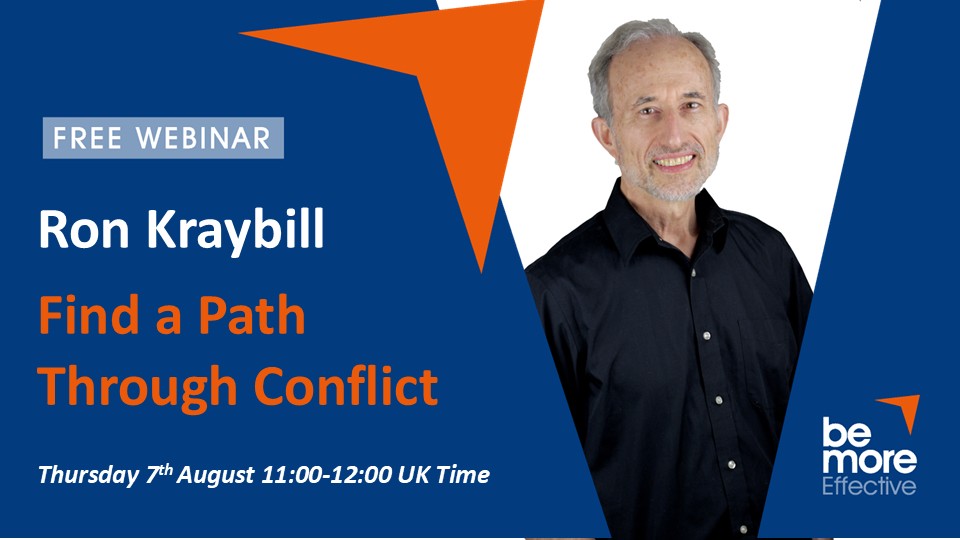The age of education is dead

Communicators and facilitators often ask me 'How far should I go to help my learners absorb and remember what they learn?'
My answer is always 'As far as possible'. To go boldly where other facilitators and quite often learners fear to tread...
In this fast paced high tech age where diverse forms of highly interactive, bright and provocative media compete for our attention it is no longer enough to put adults in a classroom, give them a case study and run a facilitated discussion.
The age of education and information is dead, welcome to the age of entertainment.
Whether you start your reading and research in the learning environment or in the realms of neuroscience it rapidly becomes clear that different people react differently to exactly the same information when it is presented in different ways. I started my research in the training room. After five years of learning and working with the Dale Carnegie organisation in the UK I had developed a specific style of training delivery that was deemed to be successful. I got plenty of good feedback from people who enjoyed their time with me and had been inspired to make positive step changes in their lives. So why did it sometimes feel such a struggle to me?
I went on a mission to benchmark with the best I could find what I discovered had a profound impact on me and on the way I work.
The trainers I met, one from Germany, one from the US and two from the UK, led me to read classic texts like J. Newstrom through to more modern material from Kirkpatrick and Jensen. The combination of seeing ideas in action and the convincing research caused me to make what for me were radical shifts in delivering learning.
Music with Mother or as Beethoven said "Music is the mediator between the life of the senses and the life of the spirit". Background music during learning discussions and solo reflection activities can be especially helpful. It creates a sense of privacy for small group discussion (making conversations more satisfying) and your learners more likely to say what they feel; it enters into memory and aids recall; and it masks ambient noise from other groups. The steady tones and tempos of Baroque music make it ideal for this purpose. Much of it was in fact composed as background music for kings, emperors, and other dignitaries.
Music stimulates the emotional centre of our brain and our emotions play a large part in our long-term memory recall. I aim to link music or rhythm which is processed by our right brain, to words, which are processed by our left brain, enabling right and left brain linkage by asking learners to create a song, jingle, rhyme or limerick containing the key learning points.
I also use music as an instant energiser, to signal breaks and the end of breaks, and to raise energy levels at any time of the day, if their behaviour indicates the need, by running a music quiz (What songs would best represent the learning so far for you? - Followed by, now sing the relevant lines) or simply use upbeat music to accompany physical energisers to revitalise tired delegates.
Time to work rest and play ~ Researcher and educator Georgi Lozanov is credited with highlighting the key aspect of activating and suppressing the cerebral or limbic structures in accelerating learning. To me the research showed that any teaching process that primarily uses only one type of teaching methodology is going to lead some participants to failure. The reason I struggled for years to get my points across to some people was down to the fact I kept using the same basic approach!
I now make sure I alternate the formats of activity and rest and provide a sequenced approach to appeal to the abstract, cerebral, emotional and limbic parts of the brain. I found that requiring learners to be attentive and to concentrate for long periods of time was counterproductive. I now limit 'content sessions' to no more than twenty five minutes and use reflection or elaboration activities like mind mapping, pair shares or internal reflection times, to enable people to process the data and create personal meaning.
In addition true down-time activities like walking, stretching, deep breathing or even clearing the table of used coffee cups and sweet wrappers can be used when behaviour indicates the mental state has dropped without needing to give more free time or formal breaks.
A pot of gold at the end of the rainbow ~ Colour is truly a powerful medium and although I had read about its impact it wasn't until I started using an exercise called Metro that invites people to find their way round the underground in Paris, that I appreciated just how powerful. Almost without exception the groups attempt to use the colour of the lines on their cards to communicate about the route to take when the use of numbers, as printed on the cards, is required to solve the problem.
Savvy advertisers have known this for years; they know it is essential to create vivid images if you wish to influence. Neuroscientists say this is because the brain has an attentional bias for high contrast and novelty, that up to 90% of the brain's sensory input is from visual sources and it has an immediate almost primitive response to symbols and icons.
So, I have spent years learning to write neatly on flip charts and hang them up straight on the wall, for what? For nothing Bob, for nothing, get over it!
Boys (and girls) love their toys ~ Apart from dressing the walls; the tables and chairs, however arranged for that day, are also dressed with colourful toys often given the posh name of "manipulatives". I scour olde worlde toy shops for Rubik's cubes, wooden puzzles, small kaleidoscopes, plastic boings and poppers, soft kooshes and soft squeezable balls. The combination of 'mindless' things to twiddle with and three dimensional puzzles to
challenge the mind (or sometimes the memory because a learner could do the Rubik's cube at school) gets a positive and warm respond from 99% of participants even at a very senior level.
In Summary
It seems common sense to say that the environment of the classroom effects learning but for me; learning to put the table and chairs in such a way that there is no front, to use music and colour, manipulatives, aromas and posters was a step into a new world - the world of entertainment. It was hard to accept that most of what is learned in my classes was not in the lesson plan but in the non-conscious and subliminal messages
I was sending out, or not, and in the way I set up the learning environment. The learners' non-conscious mind can decide, as early as two seconds prior to an actual thought or activity, what that activity means, its relevance and its value so I encourage you to intentionally use as many sensory channels as possible to influence the 99% of your participants' learning and have some fun with them along the way.
What have you learnt recently about delivering a message to an audience?
For more information please send a message via the Contact Us Page. Or you can register for an upcoming webinar.


